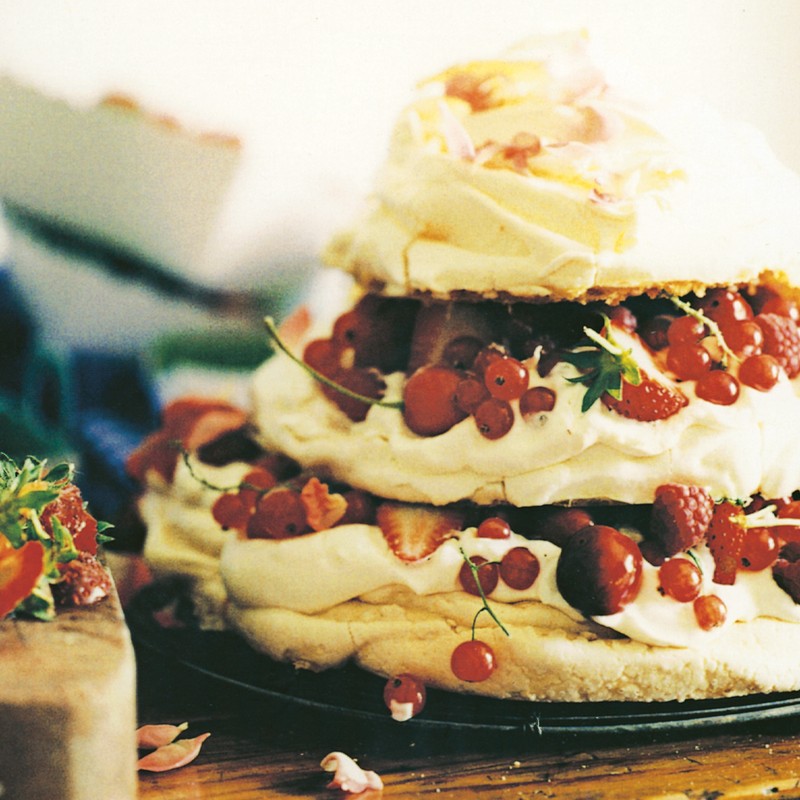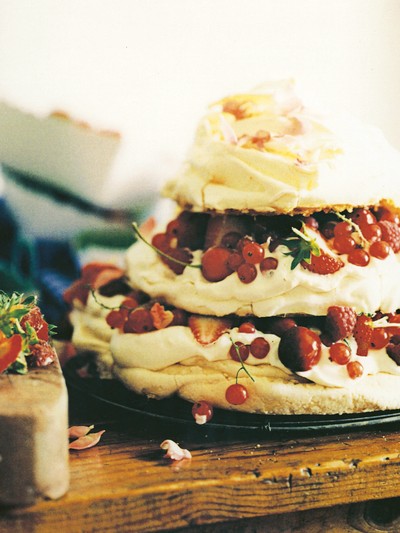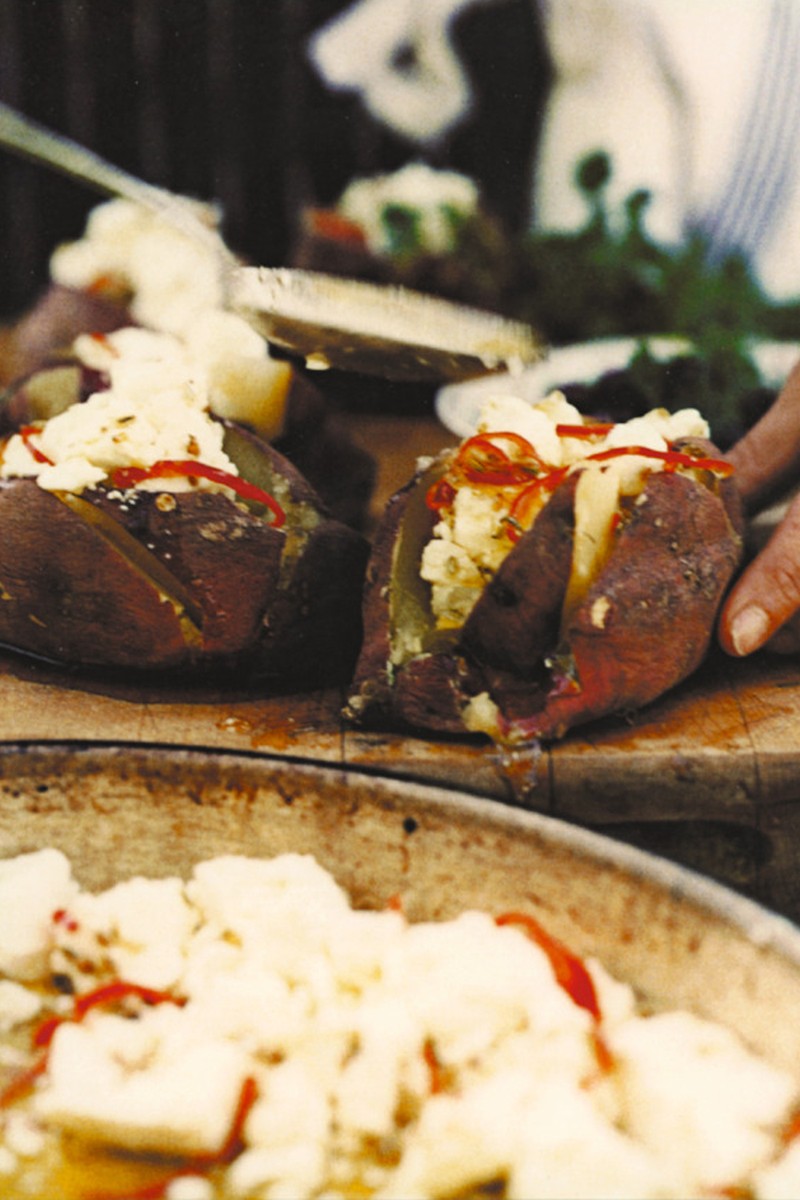

3 Summer Recipes From One Of Our Favourite Cooks
I came to live in London in my early 20s. I moved into a tiny basement flat, in the north of the city, which had a kitchenette with a cream carpet that was soon covered in stains. Everything had to be stored in one tall cupboard, which made it impossible to get at my saucepans without being attacked by an old upright Hoover. But any shortcomings were made up for by what I found around me.
At the end of my road there was a green-fronted Turkish grocery that, alongside loo rolls and tea bags, sold bottles of flower water, pails of flavoured olives and jars of sesame paste. A short trip to the Edgware Road led to the heart of London’s Arab community where, among the hookah pipes and mint tea drinking, I discovered sacks of pistachios and sour, shrivelled fruits called barberries. There were trays of Turkish delight, flavoured with lemon and orange blossom as well as rose water and, in the autumn, I could come home from the local street market with bags of honeyed quinces. I bought Claudia Roden’s A New Book of Middle Eastern Food and curled up with it on the sofa when I got home from work in the evenings. I may have been looking out at London rain, orange streetlights and the darkening feet of passers-by above me, but the writing – and recipes – took me to Cairo. With this book, and these ingredients, I could travel while standing still.
As I cooked more, discovered new recipes and tried this and that restaurant, I realized there were particular foods and dishes I thought of as magical: leathery pomegranates, their insides bursting with ruby seeds; saffron, the dried stigmas of crocus flowers gathered before dawn in Spanish fields. There were dishes that looked quite ordinary but which had undergone such a transformation in cooking that I couldn’t understand how they worked, such as Middle Eastern orange cake, made with unpeeled oranges, boiled, puréed, mixed with eggs, sugar and flour and baked to a citrussy moistness; or Persian ice cream, with its chewiness and rose-scented flavour, the product of flower water, powdered orchid root and ground mastic, an aromatic tree resin.
The ingredients I have found so exhilarating are now widely available, but this doesn’t mean they have lost their charm. I love my forays to Middle Eastern shops, and the thrill of picking up foods in foreign markets, but I’m glad that I can get most of them without going too far. The specialness is in the food itself. It excites me to see a jar of pickled lemons wedged in between the ketchup and the cornflakes in my kitchen cupboard, a bottle of pomegranate molasses hiding behind the marmalade, or a scarlet-and-sky blue box covered with Arabic script nudged up against the bold English lettering on a bottle of HP sauce. It is a cupboard full of possibilities.
Baked Sweet Potatoes With Marinated Feta & Black Olives
Sweet potatoes are not everyday fare in the Mediterranean, so this is not a traditional dish, but the combination of sweet, warm flesh and cold, salty olives and feta is irresistible. Roast pumpkin works well, too.
Preheat the oven to 170°C Fan.
Mix the feta with the other ingredients for the marinade, including just enough extra virgin olive oil to moisten it. Cover and set in a cool place, or refrigerate, to allow the flavours to meld.
Bake the sweet potatoes in their skins in the oven. They should be just tender, which will take 40-50 minutes, but do check with a skewer, as it really depends on the size of the potatoes.
When the potatoes are cooked, split them open lengthways, as you would a regular baked potato. Sprinkle with a little extra virgin olive oil and black pepper, then fill with the marinated feta. Divide the olives and coriander between the 4 potatoes and serve.
Moroccan Chicken With Tomatoes & Saffron & Honey Jam
My adaptation of a Moroccan dish; there the result is usually much sweeter and can be more elaborate. In a wonderful Moroccan restaurant called La Mansouria, in Paris, I’ve eaten a version of this dish which even contained pounded rose petals (though, to be honest, you couldn’t tell). Moroccans also serve the sauce on its own as part of their mezze. Recipes should be guides rather than instructions set in stone, but in this case do what the recipe says: reduce the sauce until it is really jammy.
Season the chicken pieces and quickly brown them all over in the olive oil. Set the chicken aside and cook the onion in the same pan until soft and just colouring. Add the garlic, cinnamon and ginger and cook, stirring, for about 1 minute. Tip in the tomatoes, mix everything together well, reduce the heat and cook for another 5 minutes or so, stirring from time to time.
Boil the stock or water and dissolve the saffron in it. Pour this over the vegetables and bring the whole thing to the boil. Set the chicken pieces on top, together with any juices that have come out of them and spoon the liquid over them. Reduce the heat to a gentle simmer, cover and cook until the chicken is tender; it should take about 30 minutes, but check after 25.
Remove the chicken pieces, set them aside, cover and keep warm. Now bring the juices to the boil and simmer until well reduced to a kind of ‘cream’: it shouldn’t be at all sloppy. Add honey to taste and continue to cook until well-reduced and jam-like. Check the seasoning and add the orange flower water. Return the chicken and warm it through in the sauce.
Serve scattered with the toasted almonds and chopped coriander, with couscous or flatbreads on the side.
Meringue & Rose Cake With Summer Berries
With its creamy white tiers and scattering of rose petals, this is a great wedding dress of a cake whose extravagant appearance belies its simplicity. It really is a case of maximum visual impact for minimum effort: a perfect combination of a pretty English garden and the magic of the Arabian Nights.
If you’re going to crystallize the rose petals, simply paint each with egg white, then dip in caster sugar, making sure it’s well coated. Set on a wire rack and leave somewhere warm and dry to harden for about 1½ hours.
Preheat the oven to 100°C Fan, Gas ¼. To make the meringues, put the egg whites in a scrupulously clean bowl of a stand mixer and beat, on medium, until they form soft peaks (room temperature whites foam more quickly than chilled). Start adding the sugar in large spoonfuls, still on medium. When it has all been added, increase the speed to high and beat until firm and satiny. Fold in the cornflour and vinegar.
Line 3 baking sheets with baking parchment and use dabs of the meringue to stick the parchment to the baking sheets. Spoon on to the first baking sheet a meringue disc measuring 26cm (10½ inches) in diameter. On another sheet, spoon out a disc of 20cm (8in). On a third sheet, spoon out a disc of about 13cm (5in).
Bake for 90 minutes, turn the oven off and leave the meringues in there overnight to dry out. They should be easy to remove from the parchment, but be careful.
For the filling, lightly whip the cream, then fold in the yogurt, icing sugar and rose water. Layer up the meringue discs with the cream mixture and fruit, making sure you allow some of the fruit to peek out at the sides.
If you’re using crystallized petals, dot them all over the cake, tucking them in or using cream as a ‘glue’. You can’t just throw them nonchalantly, however enchanting that notion may be, as they fall off. If you feel like going for wanton romance on the other hand (which, after all, is the point of this cake), throw fresh petals over the top and hope they fall beautifully.
Crazy Water, Pickled Lemons is available to pre-order now.
You can follow Diana at @DianaHenryFood
DISCLAIMER: We endeavour to always credit the correct original source of every image we use. If you think a credit may be incorrect, please contact us at info@sheerluxe.com.





